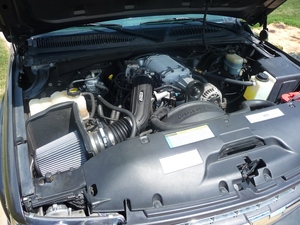Before the beginning of the Internet Revolution in book-selling, Barnes and Noble was an expanding chain of bookstores, less aggressive in driving out locally owned bookstore than Walden Books and B. Dalton by opening stores as close as possible to existing stand-alone ones.
The Seattle-based discounter Amazon.com launched in 1994 and became the epitome of the dot-com boom–and one than did not collapse when the dot-com bubble burst, although it did not turn a profit until 2003. Meanwhile, E-Bay emerged as another powerhouse Internet seller (actually, intermediary). It began in San José, California in 1995. Very successful in the auction line, E-Bay purchased Half.com in 2000, integrating its user management system, buyer/seller feedback, and account information into E-Bay. Like E-Bay, Half.com does not have any physical inventory, but connects buyers and sellers (for a fee). Amazon has warehouses for books (and other products), Barnes & Noble has brick-and-mortar stores.
Book Availability
Amazon has not competed very well with E-Bay for auctions, but for sales of books for a price set by sellers, Amazon predominates. One reason is that a buyer is more likely to find a used book for sale by one of Amazon’s sellers than those mediated by Half.com (or E-Bay) or by Barnes & Noble.
Product Evaluations
Although E-Bay has purchased Deal Time, which earlier acquired Epinions.com, a prospective buyer is more likely to find reviews of a book on Amazon.com than on BarnesandNoble.com or access to one at Half.com. The quality of the reviews on all three vary greatly, and it is significantly more difficult to find the review of a product by someone whose other reviews have made me trust his or her judgment on Amazon or B&N; than on Epinions. On the other hand, it is frequently difficult to find the title of interest at all on Epinions.com, even if there are reviews of it (due to garbled titles and a fifth-rate search engine).
Price
In my quite extensive experience, prices are frequently lower on Half.Com than on Amazon.com and prices of used books are always lower on Amazon.com than on BarnesandNoble.com.
Price-conscious shoppers (and aren’t those looking for used copies of any books that are in print all price-conscious?) would do well to look at Half.com.
Half.com used to have somewhat lower shipping prices, too, but at present both tack on $3.99 charges for shipping a book (by US mail). Amazon was keeping a dollar and a half of this charge for itself (in addition to the $.99 plus 15% of price commission), but has just dropped that to half a dollar. That is, the one doing the packing and shipping now receives $3.49 in addition to 85% of the price minus $.99). I have not sold any book lately on Half.com, so am not certain how much of the shipping charge currently goes to the shipper.)
Track Records of Buyers and Sellers
Buyers could rate transactions with Amazon sellers for as long as I can remember. After being semi-integrated into E-Bay, Half.com sellers also became able to rate transactions with buyers and to respond to buyer comments (just as in E-Bay auctions). Amazon was laggard in adding rating by sellers and responses to buyer comments, but now has it. Barnes & Noble does not include this feedback.
The ratings should be taken with grains of salt. There is the grade inflation that is general in American society, so that a transaction that went smoothly gets rated “excellent” rather than “good.” And there are some very unreasonable buyers.
Positive cumulative rating for sellers with thousands of transactions can be trusted, but one kook can distort the overall rating of a low-volume seller. I sell a couple of books a month, so one unreasonable rating can lower my “positive ratings in the last 30 days” to 50%. Fortunately, the particular complaints in feedback are visible. I have been rated 1 out of 5 by a woman to whom I shipped a book that came back as undeliverable and felt that for no extra payment I should pay to ship it again. I did not agree and also did not want to try again with such a flake. I also received a low rating for someone who waited less time than the estimated shipping time Amazon provided for a book to arrive in a village above the Arctic Circle in Norway.
I would advise sellers not to try to ship to addresses in Mexico. Sellers are supposed to ship within two business days after an order is placed (not that Amazon.com itself meets this standard for shipping new books!). I think that postmarks provide a basis for establishing when a book was shipped. Sellers have no control over how long it takes postal systems to deliver what they send!
Amazon has added yes-no questions for did the order arrive by the Amazon-estimated date and in the condition described, which might make some feedback writers to think a bit more before submitting negative feedback. With this, I think that Amazon now has an edge in feedback provision.
Customer service” generally is an oxymoron in these United States, A.D. 2007. “Don’t bother us” is the standard operating goal of most retailers (though “bothering our computer” is accepted). In particular, none of the middle-men in online used-book sales being considered here wants any human voice contact.
For Amazon and B&N; the presumption is “The customer is always right.” Amazon passes buyer complaints on to sellers for response and has been known to decide in the seller’s favor, but the default is to issue a full refund to the buyer. (I have not had any disputes on B&N; transactions, but have had far fewer transactions and only as a buyer, whereas I have been buying and selling on Amazon and Half.com for years.)
The Half.com (and E-Bay in general) view is “It’s not our fault, so don’t ask us to do anything… Try to work out problems on your own.” And refunds for products that did not show up are limited to two per lifetime, making one reluctant to use one for a low-priced item.
Security of transactions
Purchases on all three (Amazon, B&N;, Half.com) involve credit cards. So far as I can tell (which is no further than my own experience), the security of credit-card information is fine on all three (Amazon, B&N;, Half.com).
Conclusions
On four of the five criteria I use (availability, price, product evaluation, track-records for the other party, and customer service) for which there are differences, Amazon has the edge over Half. Com for four and BarnesandNoble for four (without a basis for judging B&N; making things right). All three are corporate behemoths and on-line buying is driving out brick-and-mortar stores, but I am only trying to compare the three main online purveyors of used books.
Some used-book brick-and-mortar stores that have their own online-selling sites (including the two largest ones, Powell’s and Strand) also offer their stock on Amazon. Amazon is the website most likely to have a used book (or CD or DVD) available. I think that this is the primary reason it continues to dominate the marketplace for used media products.



